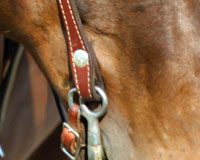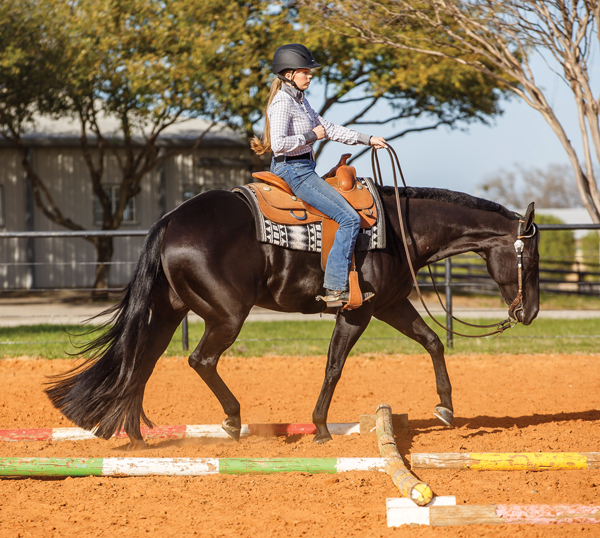
If the idea of guiding your horse through a series of obstacles sounds fun, you’ll probably enjoy trying a trail course. The obstacles were originally based on things you’d encounter while trail riding, but they’ve evolved into an event that challenges riders and horses to work together as they tackle the pattern set in an arena. Professional trainer Bruce Vickery has some tips to help you get started on this fun event.
 Bruce says the judges for this event are looking for a smooth, correct pattern just as it’s written.
Bruce says the judges for this event are looking for a smooth, correct pattern just as it’s written.“Trail is judged on how you do the maneuvers, and they’re scored on the precision, accuracy and quality of how the horse and rider negotiates each maneuver,” he says. “Penalties are incurred based on each obstacle, like knocking over a pole or missing a mark in your pattern.”
It helps to learn on a trained horse that has experience with the trail course, says Bruce. That’s because your horse needs to know how to see and negotiate distances between obstacles, have good footwork over poles, know how to move his body laterally (both front and back end), and be easily guided by one hand on the reins.
When you’re starting out, Bruce says to place a single pole on the ground and begin with walking, trotting and loping over it, then adding a couple more.
“This will help you see the spot where you need to point your horse,” Bruce says. “Build from there. You don’t need to start with an entire pattern—start with one obstacle at a time and build your confidence.”
Practice makes perfect, says Bruce. So does observation.
“If you’re really interested in this class, you need to practice a lot,” he says. “As you practice, you’ll just get better and better. And anytime you can sit back and watch the class—watch riders you admire—I think that will be super helpful. Don’t be afraid to ask somebody a question about how they ride their course.”
Here are some trail course obstacles to start with.
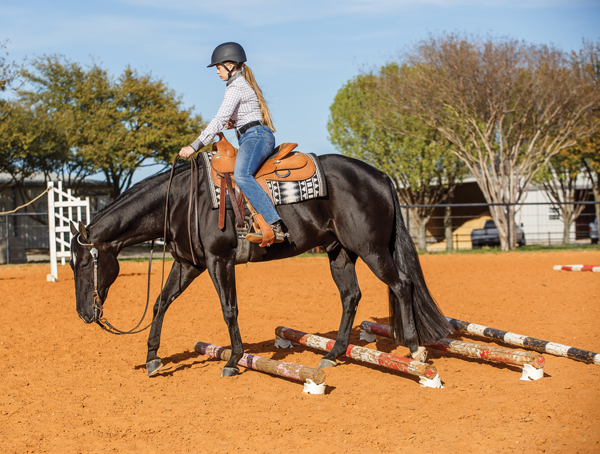
Poles
You can do a lot with basic logs laid out on the ground. Walk-overs, trot-overs and lope-overs can all be practiced in a variety of layouts, such as a straight line, serpentines, pinwheels and more. Bruce recommends setting out a 12×12-foot box made of poles to trot and lope through and loop around.
Set up a walk-over with four poles parallel, in a row, each 18 inches to 2 feet apart. Jog-overs with two to four poles should be 3 feet apart. Lope-overs should be 6 feet apart. Focus on guiding your horse straight through (not at an angle), with good cadence.
“You don’t want to do a lot of stop-and-go pace over poles,” Bruce says. “That will break up your horse’s rhythm.”
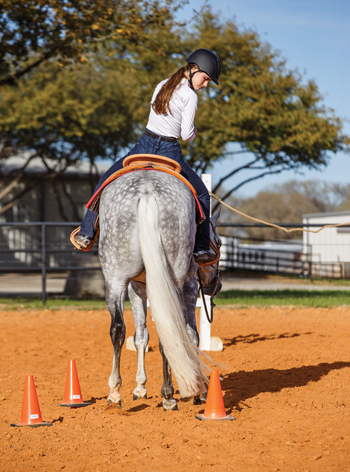
your ride, when your horse is more willing to take it slow. Photo by Abigail Boatwright
Back-Through
There are a couple of ways to set up a backing obstacle. You can do two poles parallel, a horse width apart. You can make an “L” with four poles. Or you can set up three cones to weave through.
The key is to take your time with each step, says Bruce. Don’t rush the trail course maneuver.
“This is a patience obstacle,” he says. “Teach your horse to take one step at a time.”
Backing obstacles are great to do at the end of a riding session, after you’ve been riding for a while, and need to stop for a break. Don’t overcorrect if your horse takes a step out of place. Gently move his hips or shoulders back to the proper spot.
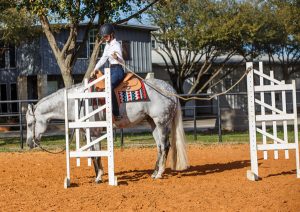
Gate
The gate can be challenging, also requiring patience. Bruce says you’ll want to move one step at a time, beginning with lining your horse up parallel to the latch and standing next to it.
You may be using a rope gate strung between two jump standards—with or without a pole on the ground between them—or a solid gate.
“Pick up the latch, back up a step, negotiate through the opening, and back up again to re-latch it,” he says. “You need to stay patient and slow, and make sure your horse has cleared the opening before turning to close the gate.”
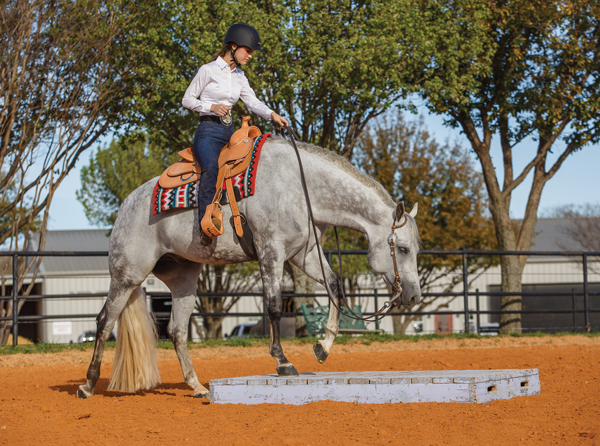
Bridge
Although it’s not as popular as it once was, the bridge is still seen at many major shows as part of a trail course. Bruce says this obstacle serves as a balance challenge for the horse, and much like the walk-over poles, you’ll want to stay steady as your go over it. This is an obstacle you definitely want to practice at home.
“Your horse needs to learn how to step onto the bridge, keeping at the same pace—not a stop-and-go,” he says. “It’s an even, balanced, cadenced walk over obstacle.”
Meet the TrainerBruce Vickery has over 25 years’ experience training horses, and has trained |
This article about how to tackle a trail course originally appeared in the July/August 2019 issue of Young Rider magazine. Click here to subscribe!




